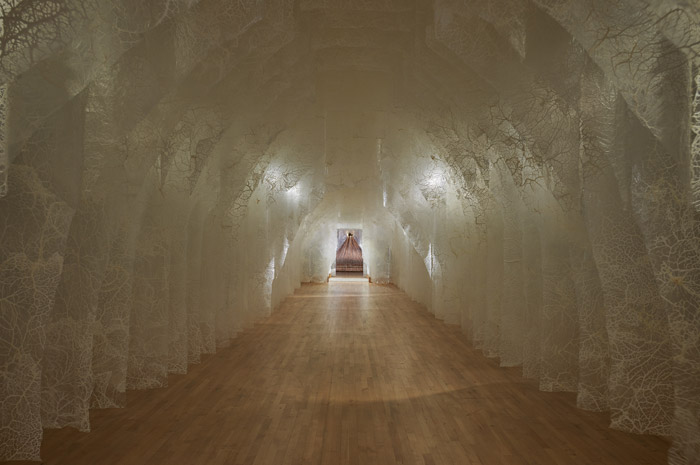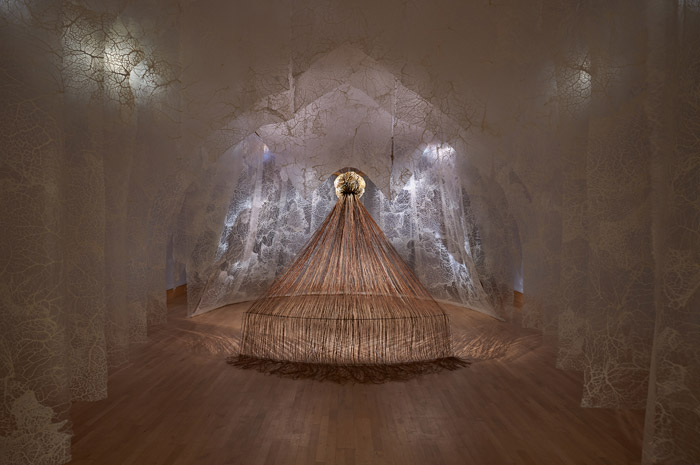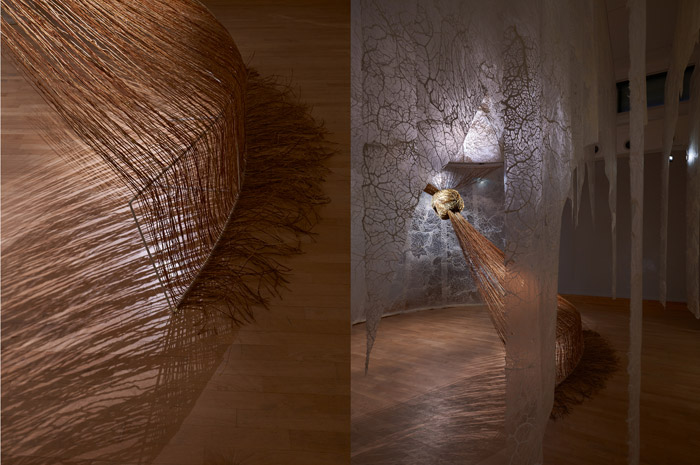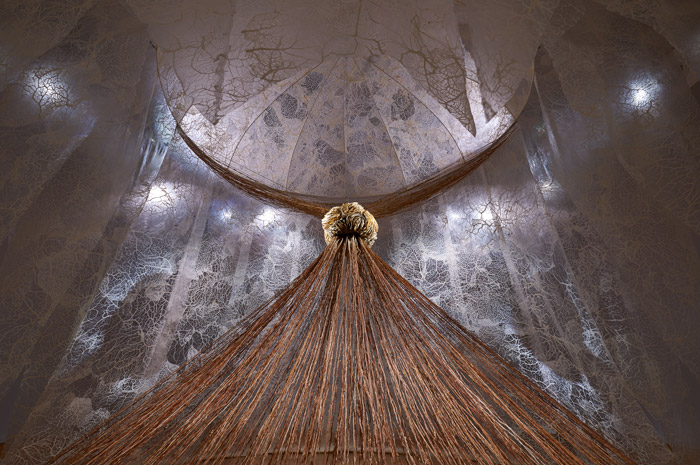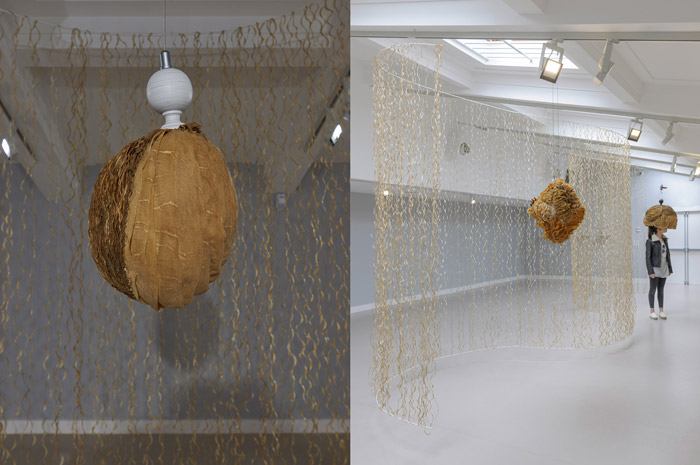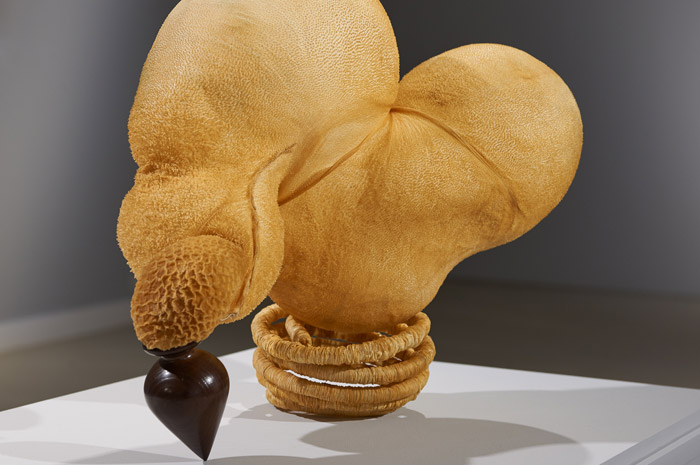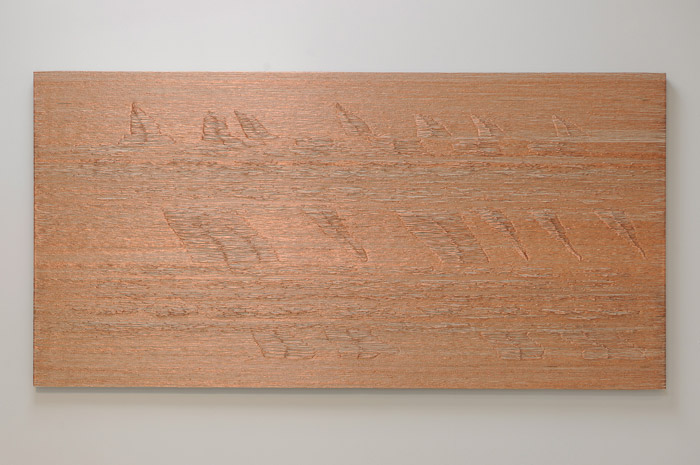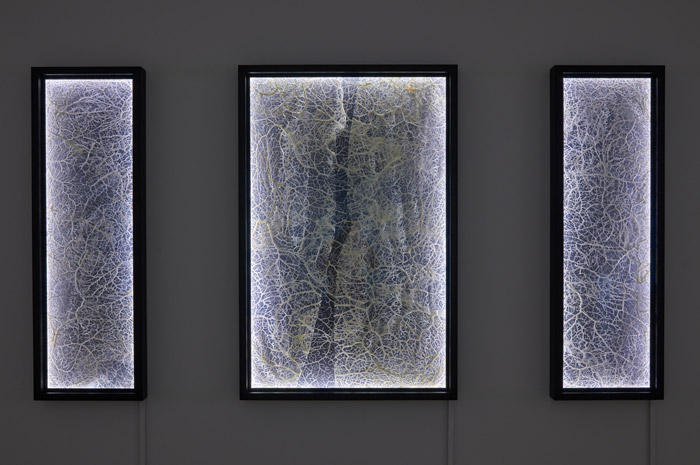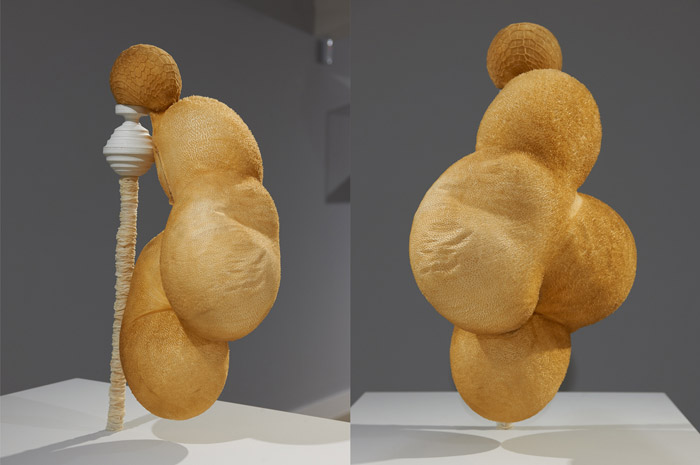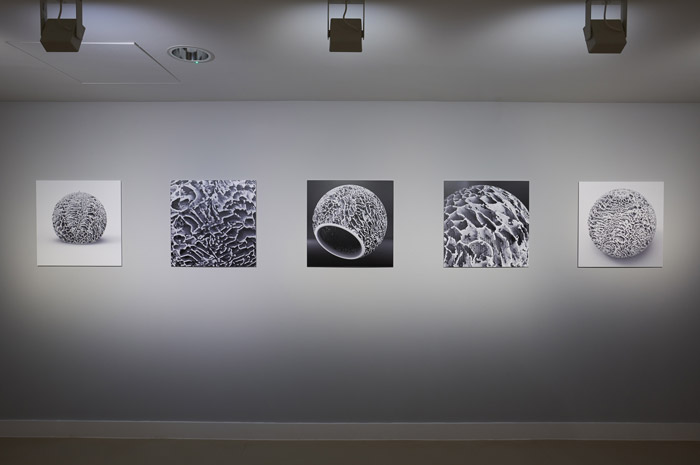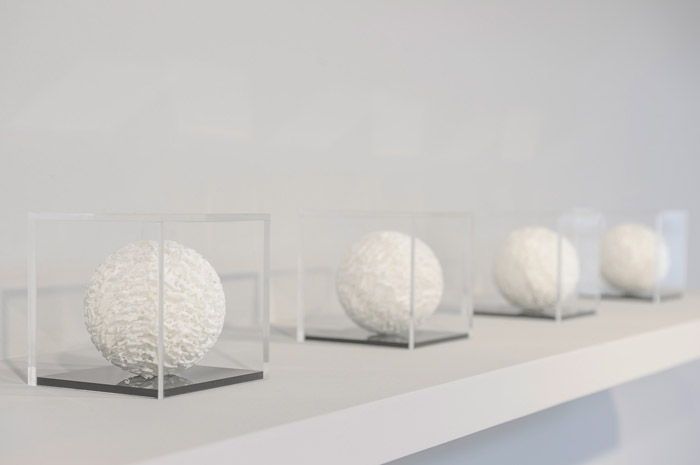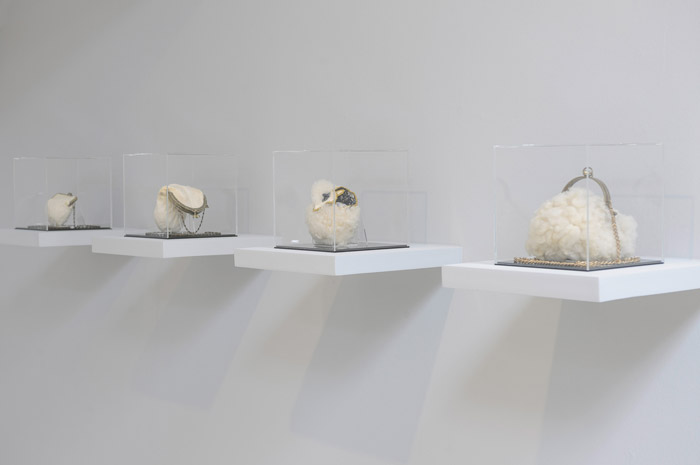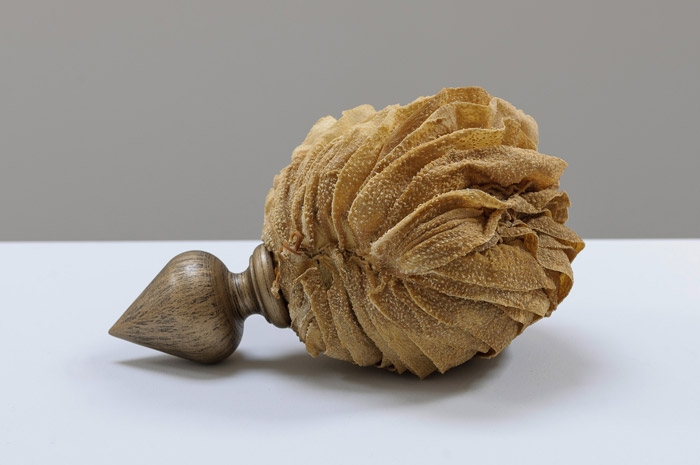Making Beauty
Djanogly Gallery, Nottingham Lakeside Arts, Nottingham University
20 August – 30 October 2016
The exhibition features reconfigurations of two of Hadzi-Vasileva’s seminal installations, Haruspex and Fragility, alongside new work produced during a year-long collaboration with digestive disease specialists at the University College Hospital (London), University of East Anglia (Norwich) and University of Nottingham, that has informed a series of new sculptural and sound works. Honing in on studies around regenerative medicine, these new works, which borrow models and techniques from innovative technology witnessed in labs and specialist hospital units, mine the metaphorical possibilities of scientific research.
Haruspex (2015) has its UK premier at the Djanogly Gallery. The work, which was commissioned for the Vatican Pavilion at the 56th Venice Biennale (2015), responds to the scriptural text, ‘In the Beginning… the Word became flesh’. True of her recent work, Haruspex is constructed from waste products from the meat industry. At the centre of the installation is a chalice-like form made from a cow’s stomach. In constructing the work from animal flesh, the artist draws attention to the corporeality of the incarnation – when the word (God) was made flesh.
Inhabiting the first two gallery spaces is a restaging of the site-specific work Fragility (2015), which was first installed at Fabrica, a converted Regency church in Brighton. The work explores the phenomenon of near-death experiences, focusing upon the light seen and discussed by those effected. Hadzi-Vasileva employs the gallery architecture to route light through animal membrane - juxtaposing experience and materiality. Fragility, like much of Hadzi-Vasileva’s work over the past decade, re-appropriates animal viscera. In this instance the artist uses pigs’ caul fat, transforming it from a perishable waste product into a sublimely beautiful material via a chemical process akin to embalming.
Her most recent sculptures include Manometry I a large panel of stitched copper wire whose lines are derived from analysis of action in the human bowel and a "bible”, Rendition of Self, transformed into a listening point in which digestive sounds are heard privately. The involvement and responses of patients have been an important element in Elpida's research; a Nottingham Digestive Diseases BRU Patient Advisory Group member wrote:
"......after I got home yesterday and sat down with a cuppa I started to think about things that Elpida had said (and this brought a smile to my face and hopefully to yours) I drank the tea and lay down with my mobile phone on my belly and recorded sounds THEN drank a can of coke and did the same...different noises! Am I mad, I actually laughed out loud :-)"
The research project was supported by an arts grant from the Wellcome Trust and the exhibition by the Arts Council England.
Making Beauty has been curated by Neil Walker with the support of independent curator Gill Hedley, and the NIHR Nottingham Digestive Diseases Biomedical Research Unit.
Read the full essay Walls and Veils by Gill Hedley, independent curator, here.

